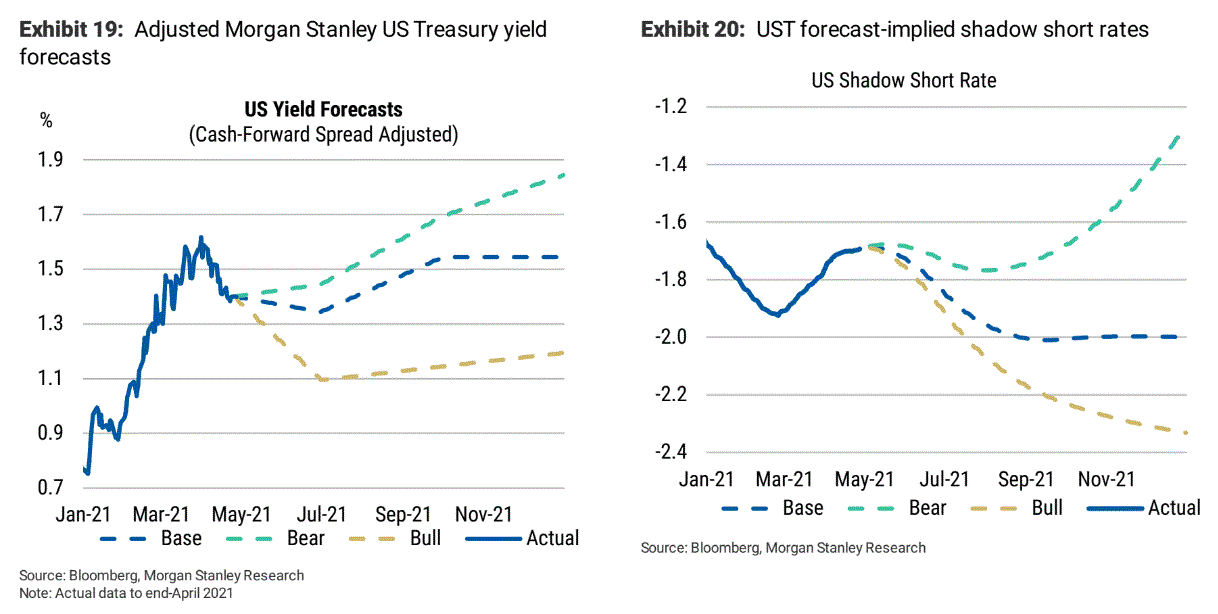Morgan Stanley with the note:
The Intuition Behind Shadow Short Rates
A shadow short rate (SSR) is an estimate of what a central bank’s conventional overnight policy rate would be if it probed the depths of negative interest rates instead of pursuing other, unconventional policies like quantitative easing or enhanced forward guidance that lowered longer-term rates instead. We can interpret the difference between SSR and the actual overnight policy rate as the value of unconventional policy maneuvers unconventional policy terms.
The difference also reflects the value of an option investors have to keep their money in cash in stead of in a bond with a yield suppressed by central bank policy. In essence, the SSR is the yield on cash that would make investors indifferent between holding the lower yielding bond and cash.

How Can Investors Use Shadow Short Rates?
We find that differences between regional SSRs are better at explaining currency movements than differences in nominal rates. SSRs allow investors to easily compare the stance of monetary policy of central banks that have cut rates to the effective lower bound (or closet o it). Understanding them is crucial as conventional monetary policy increasingly encounters the effective lower bound(ELB).

Forecasting With Shadow Short Rates
Our bull and bear case bond yield forecasts are based on multifaceted scenarios reflecting our expected global and domestic growth paths, economic and public policy assumptions, and our anticipation for investor risk demand. However, we might use our bull case scenario as a proxy for how the Treasury curve might evolve if the Fed shifts to a more dovish path of policy (for example, by extending the WAM of its asset purchases), or if the market is surprised that the Fed does not shift to a more hawkish stance (Exhibit19).We note that the Fed’s timing for announcing and carrying out at a per is a key variable in our bull and bear forecasts. Similarly, we might use our bear case Treasury forecasts as a proxy for how much the curve might rise if the Fed signals a relatively hasty taper of its purchases in the comingmonths.


